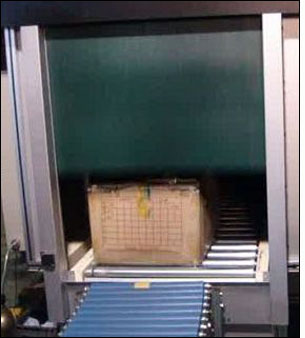Korean clothing company The Basic House has begun deploying and testing an RFID system at its manufacturing sites, distribution centers and stores, that it expects will improve efficiencies and reduce out-of-stocks once the system is up and running next month. The RFID system should also enable the firm to better forecast and plan the manufacturing and shipping of its garments, based on more accurate inventory counts, says The Basic House’s general manager, Daan Jang. What’s more, he expects it to also reduce out-of-stocks at the company’s stores.
The system includes handheld and portal readers from Minerva, in addition to EPC Gen 2 ultrahigh-frequency (UHF) UPM Raflatac DogBone RFID tags attached to each garment, as well as to the boxes in which the garments are shipped from the manufacturer to the DC, and then to a store.

The Basic House manufactures four fashion brands, which it sells at its own stores specific to those brands, as well as at department stores operated by other retailers. The company wants to use RFID to eventually track all of the garments, but is starting with just two fashion brands: Mind Bridge and The Class. Mind Bridge operates 86 stores in Korea, while The Class has another 73, all of which will use handheld interrogators to read the tags this year as shipments arrive from a DC, and conduct subsequent inventory checks.
The company’s factories have begun tagging approximately 2 million pieces of these two brands, and will continue tagging all items within those brands as they are manufactured. The Basic House projects that the number of tags it applies to garments and boxes will reach a total of 10 million sometime in 2011. To track all of these garments, the firm designed its own RFID printer-encoder system—known as the RFID Automatic Encoding Machine (RAEM)—as well as RF shields for its readers, in order to reduce stray reads. Korean automation services company Korea Trade Network (KTNET) developed software to interpret the RFID numbers and link them to the company’s existing inventory-management system.
The RFID Automatic Encoding Machine contains an RFID interrogator from Minerva. Factory workers can use the RAEM to encode and print RFID labels, and to test the labels’ embedded RFID tags. If a tag fails to read properly, the RAEM halts operation and alerts staff members. In this way, Jang says, the production of any non-readable tags is nearly eliminated.
The Basic House’s manufacturing sites in China are employing the RAEM to encode each item and box tag with a unique ID number, at a rate of approximately 1.6 seconds per tag. Once the tags are encoded, printed and read, they are attached to each garment’s hangtag, and that tag’s unique ID number is linked, in the company’s back-end system, to the item’s brand name, year, item, season, style, color and size.
When the garments are ready for shipping, a worker will apply an RFID tag to the box in which the clothing is packed, and then read the tag linked to the items packed within. The Basic House also built a shielded RFID gate through which boxed items pass on their way into and out of the factories’ warehouses. The shield narrows the RFID interrogator’s read zone, thereby preventing the device from unintentionally reading other tags in the vicinity, and thus making the system more reliable.
Software provided by KTNET receives and interprets data from the interrogators via a cabled connection, and then integrates with The Basic House’s in-house software system, providing the company with a list of all items packed within that box, as well as such information as the container’s intended destination.
Once the boxes have been packed and tagged, and the tags have been read, the data will be sent via a cabled connection to the KTNET software, which will then send a shipping notice to one of The Basic House’s two DCs in Pusan, Korea. When the garments arrive at a distribution center, they will again be interrogated by a shielded gate reader and compared against the shipping order. After the items are placed in storage, their tags may be read again for inventory checks using a handheld interrogator, and then when they are shipped out of the DC, at which time an advance shipping notice is sent to the store.
Beginning sometime this month, store employees will use a handheld interrogator to read the tags as shipments arrive from the DC, as well as on the sales floor for inventory checks. Workers will also utilize the handheld interrogator to read tags of returned garments as they are shipped back to the DC. At any point along the supply chain, in the event that there is a discrepancy involving the quantity of tags in a particular box, or those tags’ ID numbers, an alert will be triggered.
“We’re quite sure that [the system] can promote the shortening lead time from overseas factory to distribution center,” Jang said, and increase the company’s competitiveness, with greater productivity, as a result. “We expect results in improved customer service by making staff [in the stores] more available to meet the needs of the customer, and to ensure products are on the shelf.”
After the company ensures that the initial system is working properly, Jang says, it intends to expand the system to all four of its clothing brands in 2011. “We are still running a test of the system,” he notes, after which the firm can measure the gains in efficiency and the reduction in labor cost and out-of-stocks. In addition to using RFID at its Mind Bridge and Class stores, he says, The Basic House plans to eventually install the system at its 221 other stores, though when that will happen has not yet been determined. In the future, he adds, the company hopes to install RFID-enabled self-checkout kiosks for automated purchases, as well as security RFID/EOS systems in doorways.

